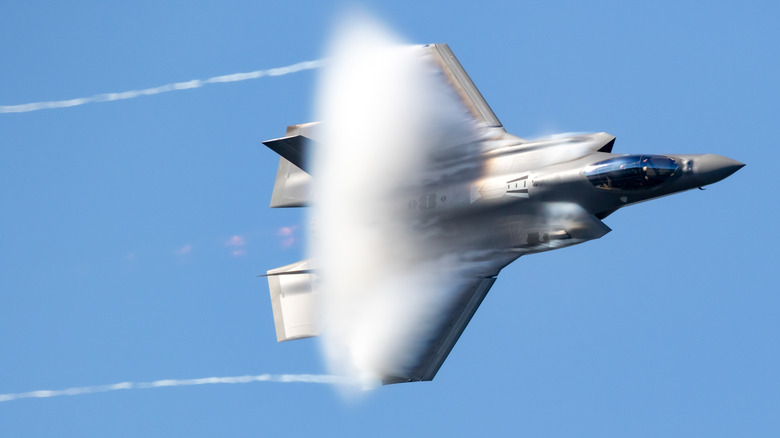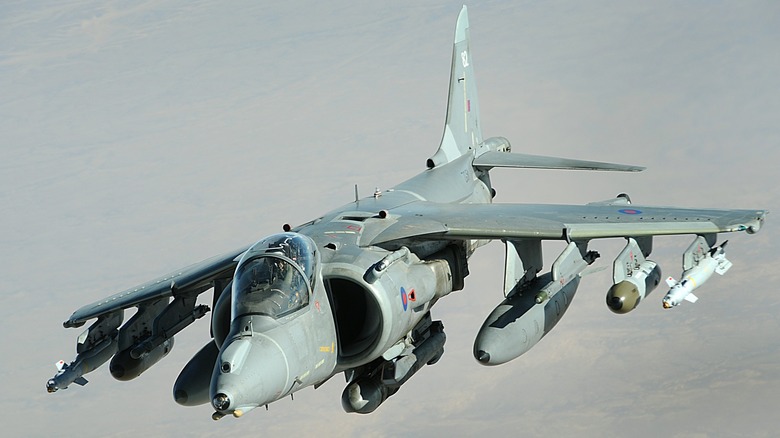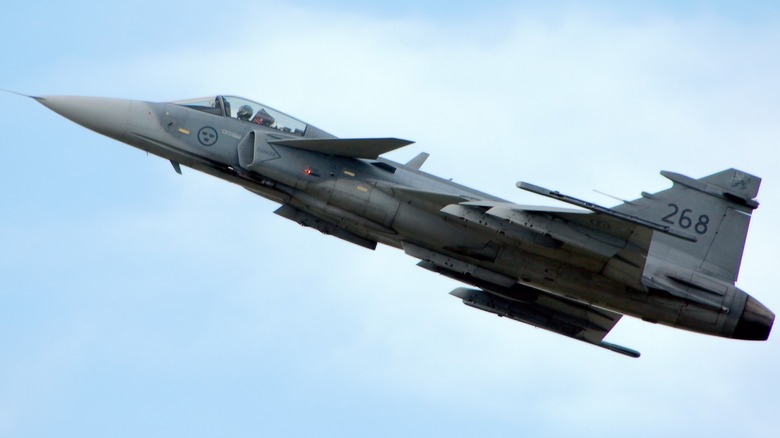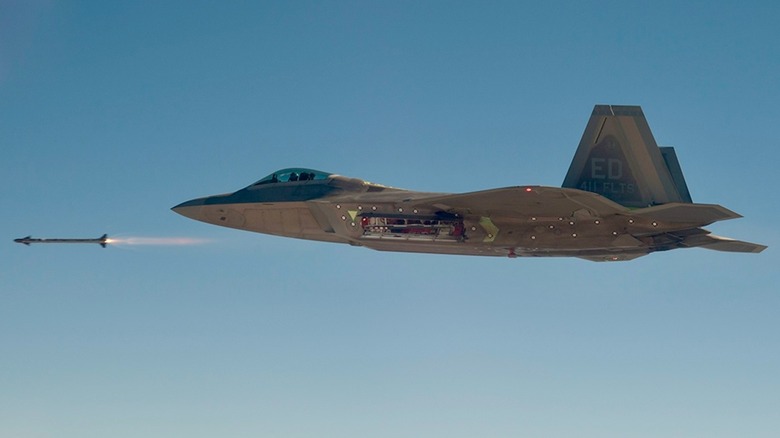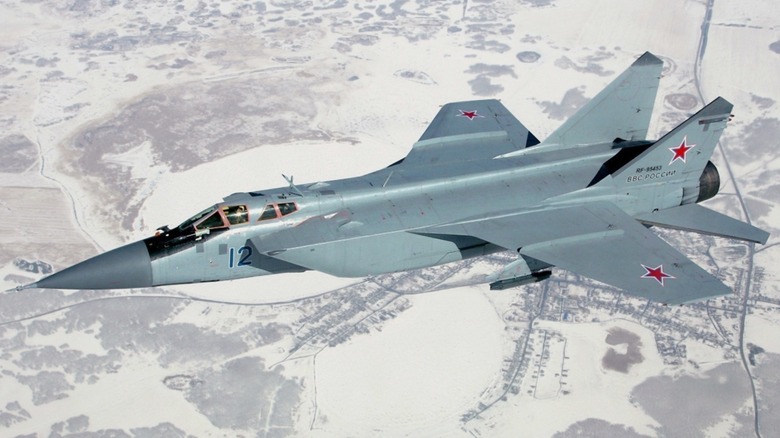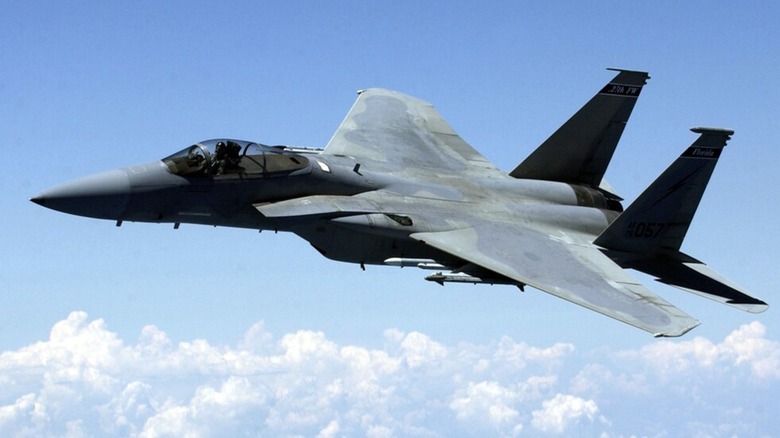5 Fighter Jets That Have Never Been Shot Down In Aerial Combat
Fighter jets have been around for decades, having first taken to the skies via the Messerschmitt Me 262 during World War II. Since the conflict ended, almost every nation shifted to jet technology for its fighter aircraft. As of 2025, there have been five generations of jet fighters, with a sixth on the way, and each generation has its benefits and drawbacks. For the most part, advances made between generations are easy to see, with the addition of features like stealth and internally carried ordinance.
Each new generation introduces technology that makes the jets faster, safer, and more capable against enemy aircraft, making them more difficult to shoot down. Plenty of fighter jets have been lost to anti-aircraft fire from the ground, but engaging in a dogfight in the modern age is vastly different from what it was in World War II or even during Operation Desert Storm. Technology improved across the board, so fighter jets have also improved to ensure survivability remains paramount.
There have been more than a dozen widely used fighter jets that haven't been shot down, including the F-35 Lightning II. Of course, that's a relatively new fighter. There are some that have been flying for decades that have yet to succumb to enemy aircraft action. The five fighter jets featured here are flown and built by various nations, and despite being involved in numerous combat operations since their introduction, none have fallen victim to enemy air-to-air missiles or cannon fire.
The British Aerospace Sea Harrier
The Harrier II is a relatively old fighter jet that the Royal Air Force retired, but it managed to carve a niche in popular culture, thanks to its use in the movie "True Lies." The jet is unusual in that it features short vertical takeoff and landing (S/VTOL), making it possible to take off without having to speed down a runway. It does this via a vector thrust nozzle that directs the jet's thrust toward the ground. Once airborne, it can engage the same nozzles to propel itself forward. This made it possible for Harriers to function as an amalgamation of a fighter jet and an attack helicopter.
The United Kingdom used Harriers during the Falkland War, where they primarily provided air-to-ground strikes. During the conflict, the 28 deployed Harriers managed to shoot down 23 Argentinian aircraft without taking a single loss. Harriers are also unusual in that they are subsonic and can only reach a maximum speed of Mach 0.9 (662 mph). At the time of its development, most fighters were aiming for speed and breaking the sound barrier was fairly normal, but the Harrier eschewed this practice.
Harriers were again used during the 1999 NATO campaign, Operation Allied Force, against the Federal Republic of Yugoslavia. Eventually, the Harrier was retired from active service in the Royal Air Force, the United States Marine Corps, the Spanish Navy, the Italian Navy, and the Indian Navy. During its service, the Harrier engaged many enemy aircraft, but not a single one was shot down during to air-to-air combat. Still, many were lost to accidents, technical failures, and other incidents throughout its service life.
The Saab JAS 39 Gripen
The Swedish aerospace defense company Saab AB developed the Saab JAS 39 Gripen as an export aircraft for a variety of air forces to use. The fighter has been in operation since the 1990s and was seen as a potential export to Ukraine in 2023, which is in desperate need of advanced arms due to the ongoing Russo-Ukrainian War. Like most fighters, the Gripen has undergone numerous upgrades, modernization efforts, and refits, and as of 2023, nearly 300 have been delivered to various customers in NATO and elsewhere.
The Gripen hasn't engaged in any protracted campaigns and has seen limited combat operations. It flew during Operation United Protector in Libya and extensively during various exercises. It wasn't until the Red Flag 2006 exercise that Gripens proved their dogfighting capabilities. During one encounter, three Swedish Gripens faced off against five Royal Netherlands Air Force F-15s, resulting in a record of 5-0, 5-0, and 5-1, following three rounds.
Gripen sales to South American countries, such as Brazil, have led to its wider use, including border patrolling and various missions in Colombia. While the Gripen hasn't been widely used as a front-line fighter, its limited engagements with enemy aircraft and ground forces have yet to result in any losses, ensuring it maintains a zero-loss record from air-to-air combat. In a theoretical exercise against China, the Gripen performed remarkably well, achieving 88% of its victories beyond line of sight, suggesting that in a real engagement, the fighter would prove itself incredibly valuable.
The Lockheed Martin/Boeing F-22 Raptor
The F-22 Raptor is the world's stealthiest aircraft and holds the distinction of being the first-ever 5th-generation fighter. It paved the way for much of the nascent technology required for jets to be considered fifth generation and has repeatedly proven it was worth the staggering costs that brought it into existence. The F-22 Raptor is an all-weather, supersonic, stealth aircraft that was developed as part of the U.S. Air Force's Advanced Tactical Fighter program. It began operating in 2005 as a highly utilized multirole fighter jet.
Fewer than 200 were produced, and none have been exported and likely won't be, leaving F-22s the sole property of the Air Force. Despite the low production numbers, the Air Force has invested a significant amount of time and money in the program, ensuring it will remain operational until its successor, the F-47, is introduced sometime in the 2030s.
In the meantime, F-22s have flown a variety of missions, including one in 2023, where it scored its first airborne kill by taking out a Chinese surveillance balloon flying over the United States. This was the first kill registered to an F-22, and since then, none have shot down another fighter despite its unparalleled dogfighting capabilities. In terms of missions, F-22s have flown in support of Operation Noble Eagle, Operation Inherent Resolve, and others. While an F-22 has yet to take down a proper enemy aircraft that does more than float about, it has also never been lost in combat.
The Mikoyan MiG-31 Foxhound
The Mikoyan MiG-31 was first introduced in the Soviet Union in 1982 and continues to fly for the Russian Aerospace Forces (Russian Air Force). It is the fastest fighter jet ever produced, boasting an impressive top speed of Mach 2.83 (2,171 mph). Russia plans to operate the MiG-31 until at least the 2030s because of its equally impressive combat record.
The MiG-31 was designed as an interceptor, but it has engaged enemy aircraft since its introduction. Russia has flown the MiG-31 in support of the Syrian government during its Civil War and during the Russo-Ukrainian War. During these engagements, the MiG-31 proved its effectiveness without enemy aircraft shooting down a single one. That's not to say the fighter, which is over 40 years old, hasn't been lost due to accidents or enemy action. The conflict in Ukraine provided the West with its first glimpse of the MiG-31 in combat, where it has proven itself as a capable aircraft.
However, Ukraine has destroyed some, notably during the bombing of the Savasleika Airbase in Russia, though these weren't in flight at the time. One MiG-31 did succumb to an air-to-air missile. On April 26, 2017, during a training flight, one MiG-31 mistakenly fired an R-33 air-to-air missile, destroying their wingman's fighter in an example of friendly fire, though both pilots successfully ejected before the crash.
The McDonnell-Douglas F-15 Eagle
Of all the fighter jets that haven't been shot down in air-to-air combat, the McDonnell-Douglas F-15 Eagle and its many variants have the most impressive record. As of this writing, no F-15s have been lost in aerial combat, but they've managed to down an impressive 104 enemy aircraft. Part of the reason the F-15 has been so successful is its widespread use by numerous nations' militaries. Of course, it's more than sheer numbers that have made the F-15 the beast of the skies, as it's incredibly agile, fast, and capable of dogfighting even more advanced planes.
The most recent version, the F-15EX, carries more than 13.5 tons of weapons, including up to 12 air-to-air missiles. That's a lot of firepower for a single fighter. That's one of the reasons that Ukraine wanted them for its fight against Russia – F-15s have a proven capability to dogfight and survive. The first F-15 took to the skies nearly 50 years ago for the U.S. Air Force in 1976, but thanks to all the modernization efforts, it remains just as capable as ever.
F-15s have flown in support of numerous operations throughout the Cold War and beyond, including use during the Lebanon War, the Gulf War, the conflict in the Former Republic of Yugoslavia, and the Yemeni Civil War, to name a few. As of 2025, the U.S. Air Force maintains only 249 operational F-15s, having replaced most of the fleet with F-22s. Still, 1,739 have been produced, many of which continue to fly for NATO nations and other allies.
